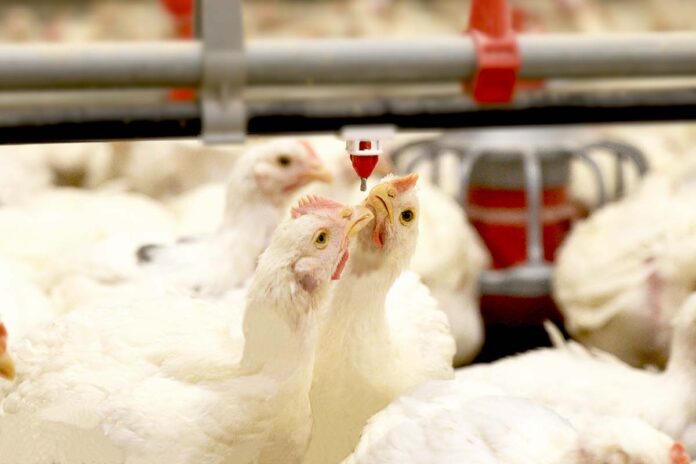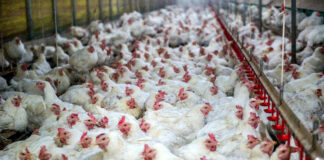
How management best practice can help support profitability on broiler farms
In partnership with Cobb, this new series of articles will examine best practice in broiler production, featuring industry voices offering their own experiences and expertise. As the first of five, this piece focuses on best practice in management – how making smart and considered decisions can, even when small, result in greater performance and profitability.
As global food demands continue to grow, chicken remains one of the most consumed meats on the planet, accounting for more than 35% of all meat consumption.[1] In the face of population growth and increasing wealth, just to retain this position will require increased production. In fact, according to a report by the European Commission, poultry meat is the only meat for which both EU production and consumption are expected to expand significantly – by about 4% – by 2030.[2] The poultry industry is faced with a simple question: how can we produce more while minimising cost and adhering to welfare and environmental standards?
For producers, there is a more pressing question: how can we remain profitable? Successful broiler production is dependent on multiple factors, but robust management is key to success, creating as it does a strong foundation for growth and continued profitability.
Early stages
Sam Drummond, broiler farmer and manager of 20 sites across the UK, believes that the early stages are vital for the flock. “In the last five years, we’ve seen a number of changes” says Sam. “We’ve seen genetics get a lot stronger and with it an increased demand for higher performance. The brooding period is critical for the development of the bird’s health. We make sure they start off strong. From day zero we make sure that everything is in place to aid the development of the birds. Those first days are all about getting the foundations right, so they can achieve their full potential.”
Creating the optimal environment for the birds during the brooding period is essential, as over heating/over cooling or too much or little light can impact performance. While breed guidelines are set and well documented, it ultimately falls on effective management to ensure this is acted upon. The producer must continually monitor not just the air temperature, but the temperature of the floor and litter, and make sure the relevant staff are trained and equipped to do so. Paying attention to the details at this stage can make a huge difference, and is best practice for every stage of broiler management
As Sam puts it, keen observation and small adjustments are required to deliver the greatest returns: “We make changes as needed in order to strengthen our business. For example, we recently placed a greater focus on water sanitation. To do that, we implemented much closer monitoring and enlisted the services of a supporting company in order to get the results we wanted. It’s not just about solving problems, but catching things before they become problems, and making changes that, even when they’re small, can cumulatively have a significant effect on your bottom line.”
To achieve best practice, this attention to detail should extend beyond the birds’ immediate needs and define every aspect of a farm’s business.
Attending to the details
For Sam, close attention to the details is a guiding principle including strong relationships with suppliers, regular veterinary support, and strong motivation for the internal team.
“A broiler farm is only as strong as its weakest link” says Sam. “We schedule regular visits from veterinarians. Farm managers measure the necessary parameters like body temperatures and crop fills. We have targets provided by the breeding company, specifying clear goals for us to attain.”
Choosing the right suppliers is also critical. While producing meat at a competitive unit cost is the goal, supplier relationships should go beyond the purely transactional. The bird must consistently offer strong performance, and all dealings with the supplier should be straightforward, consistent, and reliable. “We have a strong relationship with our suppliers” adds Sam. “We have regular meetings and events with them to keep communication strong, which makes a difference in the long-term.”
Collecting data on the farm and using that data in a way that is actionable and valuable has a profound impact. Huge amounts of data are generated on farm every day. By collecting that data in some form, ideally with effective software designed to do so, grants greater visibility and a basis for more efficient decision-making. “We collect lots of data, including daily mortalities, water consumption, and feed usage” says Sam. “Environmental data, humidity, temperature and light are all factors influencing every management decision. Trigger thresholds are constantly monitored and every day we look at the data and use it to create our monthly forecasts. Data doesn’t just show where you are but determines where you’re going.”
Sam also invests in people, making sure that all staff are fully trained and in possession of a Level 3 NVQ poultry passport. This is backed by regular internal training, alongside external training provided by visiting veterinarians. Staff are also remunerated accordingly depending on performance success.
“Profitability is the goal, but you need a path to get there” says Sam. “We set clear benchmarks of what we need to achieve. We then focus on the details to make sure we do achieve it, and consistently remain in the top 25% of producers.”
Pressures and opportunities
The poultry industry is facing increasing pressure, even as the demand for increased food production becomes more apparent. Welfare and environmental pressure groups alongside consumer opinion, amplified by social media, ensure that industry stays engaged. Welfare groups have pointed to slower-growing birds as an option, but this could have severe environmental implications. For Sam, these ethical issues highlight the need for stronger management not just at a farm level, but across the industry:
“Everyone is striving to increase productivity, whether that comes from achieving better feed conversions or improving genetics. Welfare and environmental concerns are a very real pressure. The whole industry needs to be joined up, working together to lead the way on these issues and drive best practice.”
“At the farm level, that means robust management at every stage. Focus on the actual costs and pay attention to the detail. Optimise performance, from the brooding period onwards, and make sure every detail is right. Doing so isn’t just the most productive approach, it’s the most profitable.”
For more information and resources on best practice in broiler production, visit Cobb’s website at www.cobb-vantress.com
[1] https://www.statista.com/statistics/876672/global-market-share-of-processed-meat-by-meat-type/
[2] EU Agricultural Outlook for markets and income 2018-2030, European Commission

















